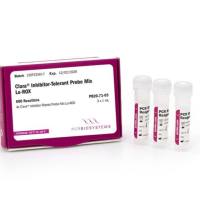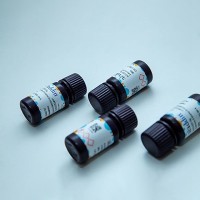Approaches to Separate and Identify PolyADP-Ribosylated Proteins Using Poly(ADP-Ribose) Glycohydrolase-Knockout Drosophila
互联网
373
PolyADP-ribosylation plays an essential function in maintenance of genomic stability and cell survival. Although there are several proteins served as acceptor proteins in vitro, there are few proteins in vivo that are identified, including poly(ADP-ribose) polymerase-1. We have been studying to analyze the mechanism of neuronal cell death observed in poly(ADP-ribose) glycohydrolase (PARG)-knockout Drosophila melanogaster that shows accumulation of polyADP-ribosylated proteins in the brain. As the first step, we have been trying to isolate the polyADP-ribosylated accepter proteins from the PARG-knockout fly. The strategy is to extract the polyADP-ribosylated proteins and isolate them with affinity chromatography using monoclonal antibody against poly(ADP-ribose) (PAR) (10H). The bound fraction was eluted by buffer containing salt. Next, part of eluted fraction is treated with NaOH for separating the proteins from PAR chain. Nontreated fraction and treated fraction were separated with two-dimensional gel electrophoresis. After protein staining, the specific spots that were newly found after NaOH treatment were candidate acceptor proteins for polyADP-ribosylation in vivo and could be analyzed with liquid chromatography-mass spectrometry. We present the procedure to this approach.









